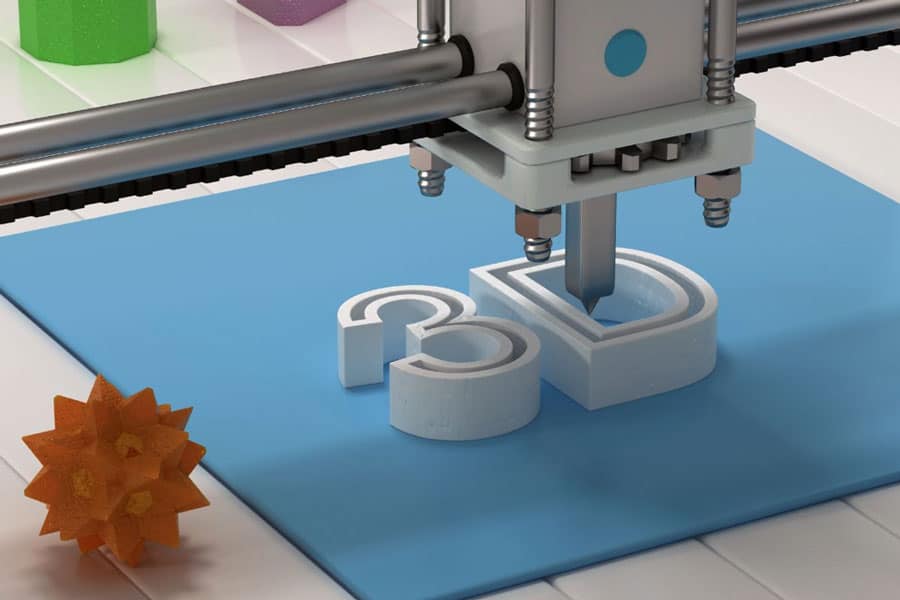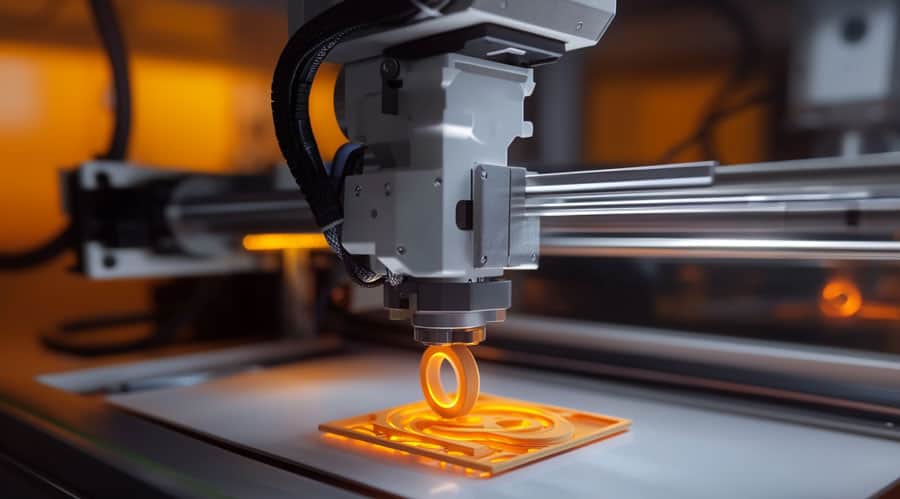3D Sign Design: Transforming Digital Signage with Innovative Technology
Quick Snapshot:
“Ditch the ordinary two-dimensional screens as we transform the art of digital signage with 3D sign designs. Brands can now create holograms and add motion, interactivity, and even augmented reality to their campaigns. Are you ready to experience this powerful shift in visual engagement? Let’s explore the future together!”
The world of digital signage has greatly progressed from basic outline display signs. We are now entering the 3D immersive world of sign design visuals that stand out, feeling like they’re bursting out from the screen and pulling in onlookers with realistic depth, movement, and immersion. Businesses are not just relaying information to their audience; they’re actively engaging them in a way that makes an impact. This shift completely alters the way brands interact with consumers.
But what sets 3D signage apart from the rest, and how is it reshaping marketing as we know it? The answer is that it grabs attention, transforms the interaction, and changes how people view digital content.
What is 3D Sign Design? An Overview of Its Revolutionary Impact
3D sign design is a revolutionary way of creating advertising materials beyond flat boards. This approach provides a realistic touch by displaying signs that can stand up, spin, and more.
3D designs differ from traditional signs, employing techniques such as depth perception and clever lighting effects to convey the intended message. These designs catch people’s attention, making them more realistic and interactive.
With AI, AR, and holographic projections, 3D signage has become even more enthralling. These allow the creation of an optical illusion, simulating physical objects and providing an interactivity that was once unimaginable. In a way, the viewer transforms from a passive spectator to an enthralled participant. This revolution in design is changing the entire communication landscape, making it more powerful and memorable.
Key Technologies Powering 3D Digital Signage
• Holography Displays
It offers a modern way of creating digital signage by allowing users to see incredibly precise and floating 3D presentations without using any specific glasses. Holographic displays show true-to-life hologram images that promote a product for a presentation, advertisement, or exhibition. Businesses may use rotational product models that are holograms to give attention-grabbing brand messages for educational or promotional purposes, thus capturing the audience’s attention with outstanding and appealing visual content.
• Augmented Reality (AR) and Virtual Reality (VR)
AR and VR are redefining the realm of 3D digital signage through user immersion and merging real-world components with other elements. For example, AR integrates images from the digital world into reality through virtual try-ons, 3D product views, and even GPS mapping. From a marketing perspective, VR provides fewer limitations, as it can place a user in a fully virtual environment. Immersive marketing is ideal for marketing a brand or product. Interactions with the brand become more transformative. Additionally, businesses use them in virtual showrooms and product simulations.
• LED and OLED Innovations
The LED and OLED display font greatly improves the quality of 3D digital signage through higher brightness, pixels, and energy consumption efficiency. LED panels, for instance, in TV form, are employed in various settings indoors or outdoors and offer unlimited designs. Outdoor displays come with motion detection, and OLED screens, on the other hand, are flexible, ultra-slim, and more appealing to the eyes.
These modern technologies enable companies to build captivating and attractive displays that improve interaction and increase brand recognition.
• Promo Projection Mapping
Promo projection mapping is revolutionizing digital advertising around the globe. Using any surface as a projector’s canvas allows not only the walls, buildings, and objects to engage graphics but also enables storytelling through 3D animation added to the overlapped graphics. With promo projection mapping, unparalleled moving visuals create a perfect fit for any occasion, such as events or product launches, making it ideal for immersive advertising. Companies utilize projection mapping to grab an audience’s attention using large visuals that promote brand messaging, engagement, and experiential marketing.
Why Companies Are Moving Towards 3D Sign Design Tools
• Enhanced Customer Participation
Customer participation has risen with the modernization and availability of sign design tools using technology. 3D sign design tools, motion sensors, augmented reality, and touch response features make customer participation much easier and fun. It increases the sign’s ability to capture attention, and this advancement cultivates interaction, which makes marketing easier.
• Competitive Advantage in Branding
To make a brand stand out, having an excellent marketing presence and an innovative edge will make it easier for customers to remember them, and 3D signage accomplishes just that. The symbiosis of realism, depth, and 3D motion effects make the brand appear more futuristic, open, and trustworthy. Through exhibition screens, promotional advertisements, or storefront displays, 3D sign design tools allow for high-quality branded signs, enabling stronger brand recall.
• Improved Customer Retention and Engagement
Switching to 3D signage increases customer retention and service sales, making it more appealing for companies to showcase their services. It motivates the customer to purchase the service or product. Marketers use 3D models to capture and increase the number of the target audience’s sight when there are displays with special offers and discounts. Restaurants also use this technology to present menu items better.
This approach not only boosts conversion rates but also gives businesses better ROI.
• Customizable Mobility and Flexibility
In contrast to traditional signs, 3D digital displays allow instant content changes, permitting businesses to tailor their messages for different events or audiences. This ensures that marketing campaigns are effective and appealing. Such animation, together with touchscreens and multiple languages, makes the 3D signs more accessible, affordable, and interesting while encouraging customer engagement.
Businesses that Benefit the Most from 3D Signage
• Retail and E-commerce
Retailers implement 3D signage to elevate the customers’ in-store journey, grab their attention, and completely display products. Holographic displays and interactive kiosks create the shopping experience and help make decisions. E-commerce brands also use 3D signs at their places of business to readily connect online shopping with physical stores.
• Hospitality and Entertainment
Resorts, hotels, and casinos utilize 3D signs for assisted interactions with guests, and immersive marketing and prospects for navigating. Projection mapping features enhance shows at theatres and other performing venues. Amusement parks use 3D storytelling, and the digital concierge provides better guest services, ensuring a better guest experience.
• Healthcare and Education
3D signs are set up in hospitals to provide alerts to patients and attendants, guide them, and share real-time patient information.
Medical training institutions supplement hands-on learning using holographic simulations. Teaching ideas and concepts through 3D learning modules, interactive displays, and digital signage makes it less demanding and more interesting for students and researchers.
• Corporate and Business Sectors
Corporations renovate offices using 3D digital reception signs, interactive branding, and smart meeting room displays. Holographic business presentations support effective communications in business. At the same time, modern digital signage engages employees to take an active interest in the organization by displaying company news, calendars, and reports in real-time.
How 3D Sign Design is Transforming Advertising and Marketing
• Creating a “Wow” Effect
3D signage tackles the advertising challenge of getting noticed by creating a sign that advertises any product and captures attention. Unlike traditional signage, it engages the viewer’s attention because of its depth, animation, and holographic features. This type of advertising improves the brand’s ability to remember the advertisement and increases customer engagement. Businesses have started utilizing 3D billboards, projection mapping stores, and displays to stand out.
• Directly Engaging Consumers
Modern 3D signage, such as motion sensors, AI personalization, and touch screens, can feature greater interactivity. This allows advertisers to deliver ads to the right consumers when it matters by analyzing their behavior.
Retailers and event organizers have started to adopt 3D interactive signs to facilitate customer engagement by promoting manual engagement that boosts the user experience. The ability to adapt messages in real-time elevates the brand’s positioning and fosters better customer loyalty.
• Social Media Amplification
Social media significantly increases exposure from 3D signage. 3D advertisements capture viewers’ attention and get shared, further improving brand visibility. Businesses use this feature by strategically incorporating elements within their signage that make users want to take photographs, upload them, and share them on different platforms. This ability to go viral makes 3D signage an effective tool for improving a brand’s online presence and marketing campaigns, enabling it to achieve greater results.
How to Implement 3D Signage in Your Business
• Define Your Goals and Objectives
Unlike traditional forms of advertising, businesses using 3D signage must take active steps in formulating a goal to cover their business interests. The goal could be increasing sales, brand awareness, or even growing customer engagement, making design and technology selections after deciding the goal. Executing the plan will guarantee improved audience engagement, increased ROI, and long-term efficiency of digital signage campaigns.
• Choose the Right Technology
Every business has different goals and strategies when dealing with the audience, making it important to pick the right technology for the 3D signage. Multi-projection systems, holographic displays, LED walls, AR, and projection mapping each have their benefits.
Learning these options makes it easier for businesses to build impactful signage that conveys messages while improving customer experiences and participation.
• Focus On Content First, Then Design
Visually appealing content, clear messaging, and animation-driven communication determine the efficacy of 3D signage. The combination of high-grade graphics, uncluttered layouts, and motion elements captures and retains the audience’s attention. An appropriate balance of creativity and simplicity aids engagement, making the signage attractive and easy to understand.
• Collaborate With Expert Designers
Working directly with established 3D sign designers ensures they complete the work to a high standard and consider every detail. Experts understand the technical information, how to integrate the displays, and how the audience will interact with the signage. They create signages that are optimal for the viewers. This enables flexibility and ensures that the signs meet business needs accurately and effectively.
• Track And Enhance Effectiveness
Keeping track of how the 3D signage performs is crucial to its continued effectiveness. Businesses use analytics to track user engagement, time spent on the content, and even conversion rates. Constructive customer feedback serves the purpose of improvement via changes in strategy and content in real-time, thus ensuring the signage remains relevant for the best marketing outcomes.
The Future of 3D Signage: What’s Next?
Zero-based budgeting and Artificial Intelligence personalization are revolutionizing 3D signage because businesses can alter content in real-time to fit a specific audience.
Companies use Artificial Intelligence to serve bespoke adverts to customers, ensuring product relevance and increased interaction. Further analytics help sharpen the message, allowing brands to recalibrate the content on the go and improve customer experiences for better and more efficient marketing engagements.
Later, 3D signs will include new interactive elements, including gesture, voice, and augmented reality control. These technologies produce hands-free interactions where users engage with the displays using gestures or voice commands. Retailers, event organizers, and even entertainment venues use these technologies to increase customer interaction and usability while providing engaging, seamless, immersive digital experiences.
The integration of 3D signs with smart city infrastructure will redefine public communication. Digital billboards will display pictures of Semrush, monitor internet traffic in different regions, and show emergency messages and urban banner advertisements based on the geography of potential viewers. This ensures better city navigation, improved public safety, and advanced sustainable urban development through focused, efficient, and data-driven digital communication while enhancing people’s lifestyles.
Now is the Time to Adopt 3D Signs.
3D signage creation makes digital displays more appealing, interactive, and aesthetically stunning. Businesses investing in this innovative technology gain a competitive advantage, improve customer experience, and, most importantly, get better marketing performance.
With technology improving so quickly in AR, holography, and AI, 3D signage has limitless potential. Brands that embrace this opportunity will be the frontrunners in a field where immersive engagement is the reward.
In a competitive market, standing out among the noise is crucial for any business, especially regarding 3D signage. 3D signage isn’t just an upgrade to an existing product; it is a whole new product in and of itself. Updating branding visuals to engage users in different and memorable ways is the next step, and any business that fails to do so will fade into the background. The change is starting to happen, but will your business lead the transition, or will it remain stagnant and ignored?
Here are Some Common Questions and Answers
✓ Is 3D signage expensive to implement?
– While the price is subject to change depending on the technology used, the ROI makes 3D signage worth the investment. If businesses properly utilize real-time updates and interactive features, the investment can pay for itself in the long run.
✓ What industries benefit the most from 3D signage?
– The retail, entertainment, hospitality, and even healthcare industries, along with various other corporate sectors, will benefit the most as 3D signage has the potential to enhance the branding visuals, making it easier to grab the attention of potential consumers for a more immersive experience, which leads to high engagement and sales.
✓ Do I need special equipment to view or utilize 3D signage?
– No, not really. Most tools available in the market remove the need to wear special glasses, including holograms or 3D LED panels. However, AR-based signage may require a mobile device or smart glasses.
✓ Can I update 3D signage content in real-time?
– Most 3D digital signage solutions promise to be able to edit settings live. So yes, switching advertisements or promotions without replacing the entire signage is easy.
✓ What is the best way to select 3D signage for my business?
– Your choice primarily depends on your goals, budget, and target audience. If your focus is on interactive elements, AR is the option, while holograms will attract attention. For events, projection mapping is the best option. Expert consultations guarantee that you will make the best choice.



